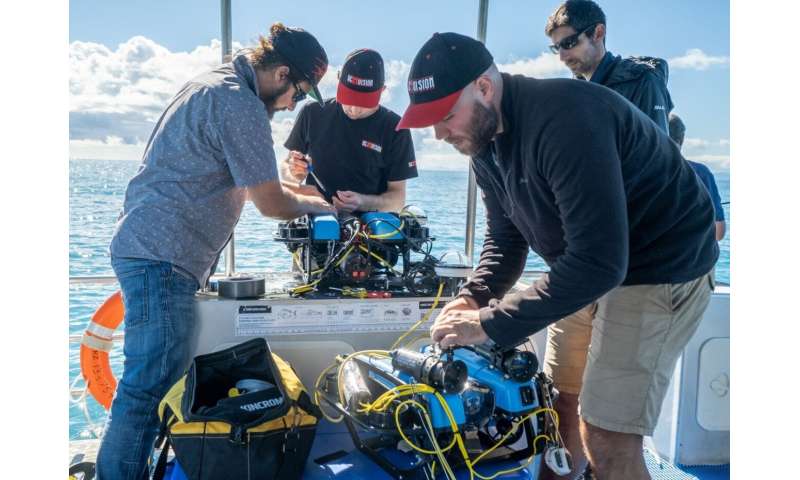AI robotics researcher has eye on underwater mussel industry

Te Whare Wānanga o Waitaha | University of Canterbury (UC) Engineering Ph.D. student Tim Rensen has been developing a cost-effective underwater robot to support Aotearoa New Zealand's mussel farm industry.
This innovative technology assists mussel farmers in measuring mussels, providing vital information to determine harvest times, and predicting yields, which is crucial for planning processing staff requirements.
"What we're trying to do is put eyes underwater in a way that's not been possible before," says Rensen, who has BSc and BE(Hons) degrees from UC.
The autonomous underwater vehicle (AUV) and data-crunching algorithms "take the strain off a human having to drive this thing, day in day out, as well as all the data analysis, which makes it pretty practical," he says.
The AUV helps to de-risk aquaculture by providing key insights, using artificial intelligence (AI) to navigate and recognize species, as well as to perform manual tasks.
Rensen is working with early adopters to validate the mussel-farm scanning technology and aims to turn it into a business by the end of the year.
His Ph.D. supervisor Computer Science Professor Richard Green says seeing the equipment in use is incredibly impressive.
"Nowhere else is the capability, with so much AI, all integrated. But it's not just the technology, it's finding someone like Tim prepared to go the extra mile," Professor Green says. "He has the passion but also the motivation to set up a company and understand what's required in order to take this past the research phase."
Moving towards commercialization, Rensen's role has morphed to Chief Technical Operator of a small company of several full-time staff while continuing to manage the research project.
"It's a different ballgame setting up a company compared to undertaking research," Rensen says. "Often what you'll produce when you study sits on a shelf gathering cobwebs. I've been humbled by the world of business."
Nevertheless, he has big ambitions for the technology. "We are focused on de-risking aquaculture and saving money on large capital investments needed to scale, to allow New Zealand aquaculture exports to become a multi-billion-dollar sector."
New Zealand's unique shallow continental shelf lends itself to setting up large mussel farms up to 10km offshore and the Government wants a threefold increase in aquaculture exports in the next 10 years. As well as providing a great food source, mussels sequester carbon in their shells.
"With a lower carbon footprint than tofu, we're pleased to be supporting a sustainable food industry which has massive climate change mitigation potential," Rensen says.
Mussels could potentially replace other higher carbon footprint protein sources, "but it's only economically viable if you can automate as much as possible," Professor Green says.
The project team, which has been working closely with industry and iwi, see other applications for the AI robotics technology, including marine inspections and other types of underwater aquaculture.
"What we're doing will help protect this pristine coastal environment and the values of the kaitiaki (guardians of the environment). And that's what drives us, even before we think about commercial success," Rensen says.
Provided by University of Canterbury